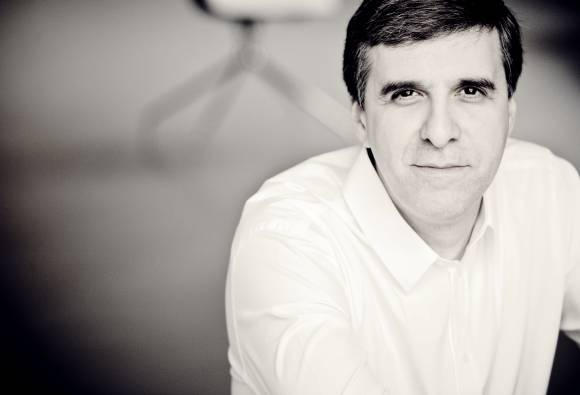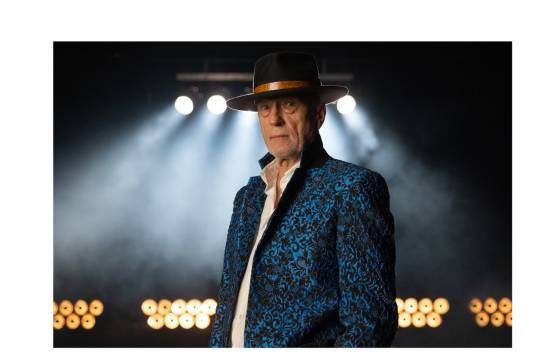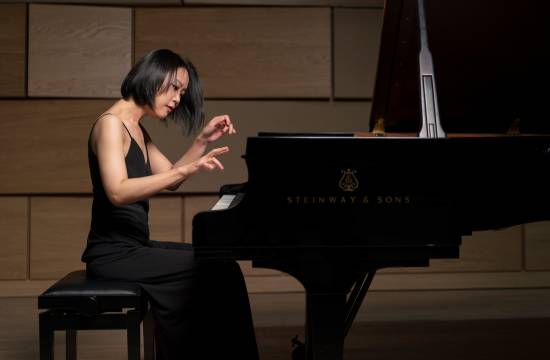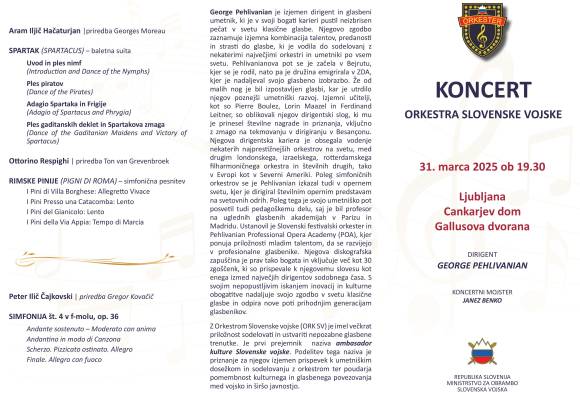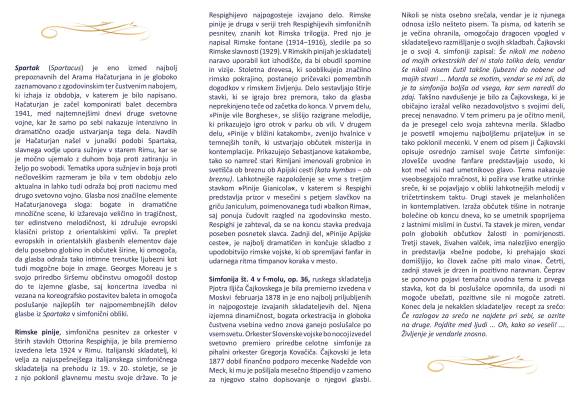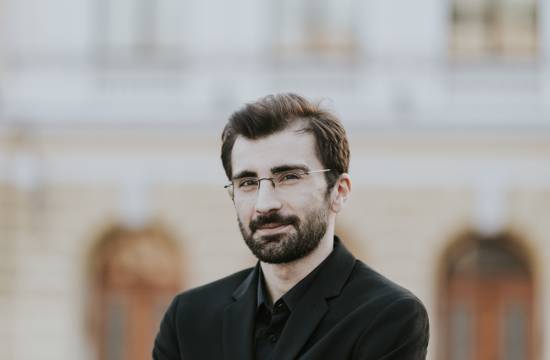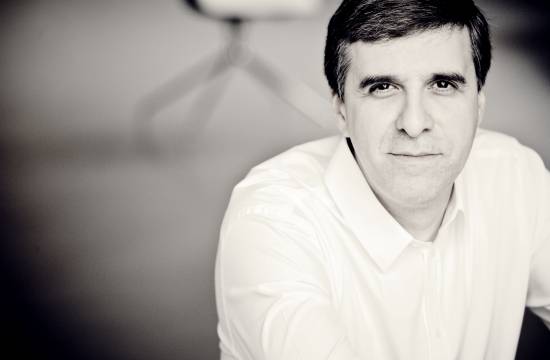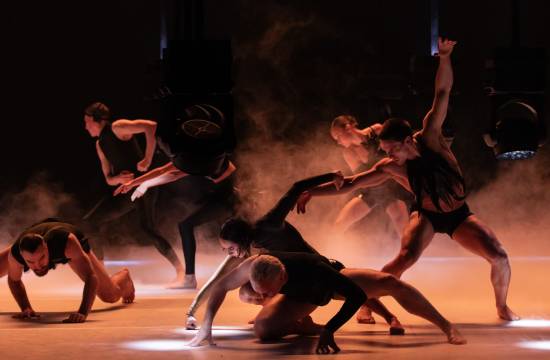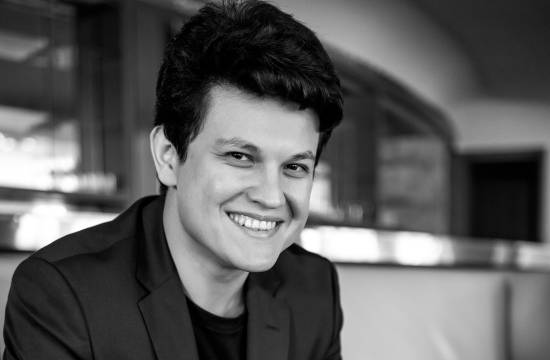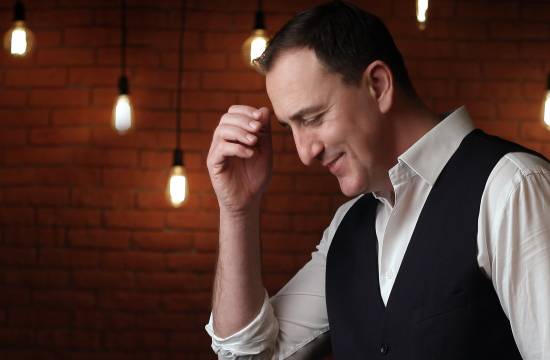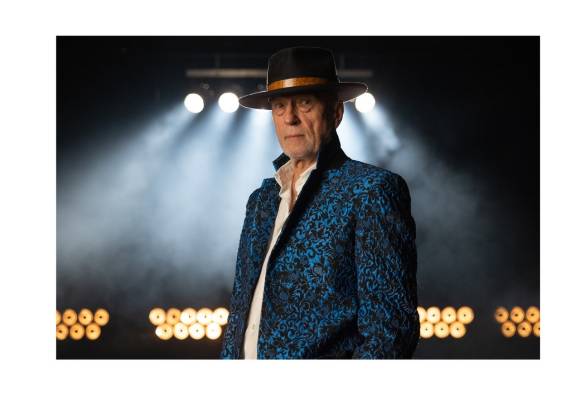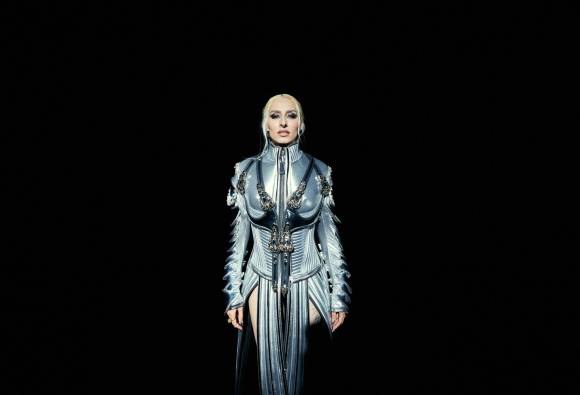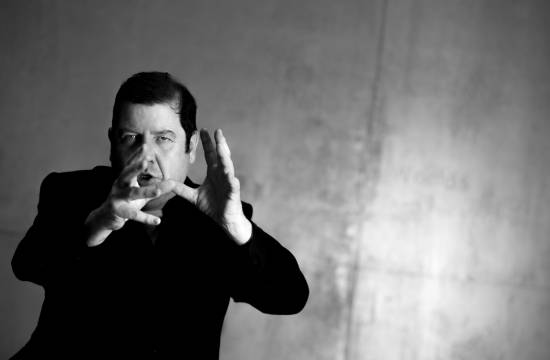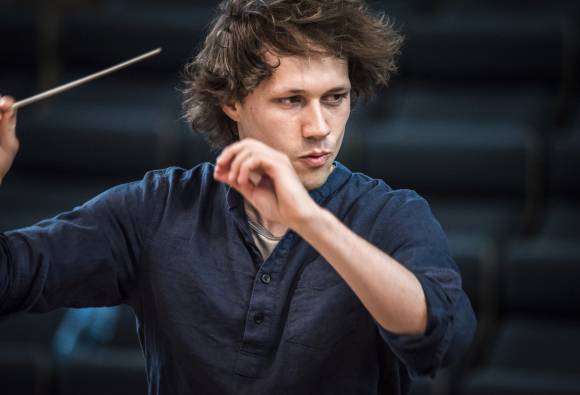
Vince Mendoza & 80/70 Years of RTV Slovenia Big Band and Symphony Orchestra
Anniversary Concert
Conductor: Vince Mendoza (8-time Grammy Award winner)
RTV Slovenia Big Band
RTV Slovenia Symphony Orchestra
This year, the RTV Slovenia Big Band and Symphony Orchestra are celebrating their 80th and 70th anniversary, respectively. They will mark these milestones with a gala concert, under the baton of the legendary VINCE MENDOZA. The renowned American conductor, composer and music arranger has built a stellar career, writing and arranging music for artists such as Björk, Gregory Porter, Chaka Khan, Elvis Costello, Al Jarreau, Diana Krall, Melody Gardot, Sting and Joni Mitchell. One of the world’s most respected and sought-after jazz composers, Mendoza has guest conducted some of the world’s most prestigious orchestras, including the WDR Big Band, the Metropole Orchestra and the New York, Los Angeles and Berlin Philharmonics.
The last eight decades of musical life in Slovenia would not have been the same without the RTV Slovenia Big Band and Symphony Orchestra. In partnership with Slovenian music legends, most notably Jože Privšek, Janez Gregorc, Samo Hubad, Anton Nanut and soloists Petar Ugrin, Andrej Arnol, Silvester Stingl, Marko Črnčec, Jure Pukl, Dubravka Tomšič Srebotnjak, Aci Bertoncelj, Irena Grafenauer, Igor Ozim, Branimir Slokar, and many others, our ensembles have raised the bar for what makes great jazz music to unprecedented heights.
At the concert in Cankarjev dom’s Gallus Hall, Vince Mendoza and the RTV Slovenia ensembles will perform jazz standards as well as the conductor’s latest compositions, which have earned him eight Grammy Awards and solidified his repute an artist at the forefront of jazz and contemporary music on a global scale.
Vince Mendoza & 80/70 Years of RTV Slovenia Big Band and Symphony Orchestra
Vince Mendoza & 80/70 Years of RTV Slovenia Big Band and Symphony Orchestra
20,00 | 25,00 | 29,00 | 36,00 EUR
16,00 | 20,00 | 25,00 | 30,00 EUR * * EUR for younger than 25 and older than 65, as well as pensioners.

Sergej Ćetković – 25 Years in Music
Organised by AVI - Agencija Vrhunskih Idej
After sold-out concerts and in celebration of his 25-year music career, the beloved Balkan artist Sergej Ćetković returns to the stage of Gallus Hall. He is preparing an evening filled with emotions and timeless hits. Songs like Pogledi u tami, Još volim te, Korov, Ljubav, Moj Svijet, Zar je kraj, and Nek te ljubav dočeka have captured emotions that are difficult to put into words. From the moment he steps on stage, he lifts the audience to their feet, creating an unforgettable atmosphere.
My first concert in Slovenia was right here at Cankarjev dom. Now, I am returning to an audience that is always full of warmth, attentiveness, and genuine emotions. That’s why I am especially looking forward to this concert. In celebration of my 25-year career, an unforgettable evening awaits us all. I am preparing a special musical journey filled with memories, surprises, and, of course, love.
The concert at Cankarjev dom will definitely be something special – intimate yet magnificent. Romantic yet full of energy. Elegant yet emotional. The audience will have the opportunity to experience Sergej in his element – live, genuine, and direct.
Sergej Ćetković – 25 Years in Music
25,00 | 32,00 | 36,00 | 38,00 | 43,00 EUR
22,00 EUR *

Slovenian Armed Forces Band in Concert
Organised by: Ministry of Defence
The concert of the Slovenian Armed Forces Band, conducted by guest conductor Maestro George Pehlivanian, will captivate the audience with its program, appealing to both music connoisseurs and the broader public while showcasing the orchestra's quality and versatility.
Established in 1996, the Slovenian Armed Forces Band plays a key role in various ceremonies and protocol events, including military parades, state ceremonies, and commemorations. In addition to its protocol performances, the orchestra is also well-established on concert stages, performing in various ensembles, from the concert and ceremonial orchestra to the big band and chamber ensembles. With its rich repertoire, it makes a significant contribution to Slovenia's cultural heritage and delights audiences both at home and abroad.
Slovenian Armed Forces Band in Concert
Aram Ilyich Khachaturian | Arrangement by Georges Moreau
SPARTACUS – Ballet Suite
Introduction and Dance of the Nymphs
Dance of the Pirates
Adagio of Spartacus and Phrygia
Dance of the Gaditanian Maidens and Victory of Spartacus
Ottorino Respighi | Arrangement by Ton van Grevenbroek
PINI DI ROMA – Symphonic Poem
I Pini di Villa Borghese: Allegretto Vivace
I Pini Presso una Catacomba: Lento
I Pini del Gianicolo: Lento
I Pini della Via Appia: Tempo di Marcia
******************************
Pyotr Ilyich Tchaikovsky | Arrangement by Gregor Kovačič
SYMPHONY No. 4 in F minor, Op. 36
Andante sostenuto – Moderato con anima
Andantino in modo di Canzona
Scherzo. Pizzicato ostinato. Allegro
Finale. Allegro con fuoco

Zoran’s concert programme Pridi k meni (Come to Me) includes this legendary singer-songwriter’s most popular songs and a few that he feels have been unfairly overlooked. Under the musical direction of violinist Bruno Urlić, a group of world-class musicians will engage the audience and have them clapping along to their upbeat rhythms, while Zoran's infectious choruses will get the crowd to sing along. The concert’s featured guests are Duo Avtomobili aka the Vuksanovič brothers, Zoran’s friends and collaborators of forty years. Together, they will perform some of the brothers’ greatest songs.
Let yourself be carried away by the enduring appeal of analogue Praslovan.
Zoran Predin: Pridi k meni (Come to Me)
23,00 | 28,00 | 35,00 | 40,00 EUR
20,00 | 23,00 | 28,00 | 35,00 EUR * * EUR za mlajše od 25 in starejše od 65 let ter upokojence.

Pink Floyd Tribute - cancelled
Organised by: Calix Music d.o.o.
Concert Cancellation Notice
We would like to inform you that the organizer, Calix Music d.o.o., has canceled the scheduled concert. If you purchased your tickets at Cankarjev dom, you can request a refund by contacting us at vstopnice@cd-cc.si at the latest until April 15, 2025. More information about the refund process can be found here. Thank you for your understanding.
Get ready for a journey through the history of Pink Floyd! The Italian group PINK FLOYD HISTORY is coming to Cankarjev dom as part of their European tour, celebrating 60 years since the formation of Pink Floyd and 50 years since the release of Wish You Were Here.
The PINK FLOYD HISTORY "Welcome to the Machine Tour 2025" delivers a brand-new, unforgettable concert experience spanning six decades of Pink Floyd’s revolutionary music. The setlist features timeless classics that made Pink Floyd one of the most influential bands of all time, from The Dark Side of the Moon to The Wall. A special highlight of the concert is Wish You Were Here—a masterpiece of psychedelic rock—brought to life in an emotionally charged, immersive performance. Fans can expect live renditions of iconic songs such as Shine On You Crazy Diamond, Welcome to the Machine, and Wish You Were Here, performed against a stunning visual and atmospheric backdrop.
Beyond the music, the PINK FLOYD HISTORY "Welcome to the Machine Tour 2025" offers an unparalleled sensory experience. Spectacular lighting effects, breathtaking visuals, and captivating storytelling take the audience on a journey through Pink Floyd’s history, showcasing the band’s profound influence on music and culture. On stage, world-class musicians bring Pink Floyd’s legendary sound to life with impressive authenticity and electrifying energy, creating a concert experience not to be missed.
PINK FLOYD HISTORY is Europe’s premier band dedicated to Pink Floyd’s repertoire. Hailing from Italy, they have spent over a decade passionately performing the legendary band’s music, captivating more than 500,000 fans across their tours.
Pink Floyd Tribute - cancelled
33,00 | 36,00 | 39,00 EUR

Vlado Kreslin: 34th Kreslinovanje (Kreslin Festivities)
Mali bogovi and Beltinška banda
Vlado Kreslin, voice, acoustic guitar, harmonica; Iztok Cergol, accordion, violin, saxophone, mandolin, acoustic guitar; Mileta Grujić, piano; Samo Budna, violin; Anton Tonč Feinig, Hammond; Matej Sušnik, electric and acoustic guitars; Domen Gracej, trumpet; Andraž Mazi, pedal steel guitar; Luka Ovsec, percussion; Andrej Sobočan, cymbals; Boštjan Rous, clarinet, saxophone; Luka Jerončič, electric bass guitar, double bass; Gašper Peršl, drums
Vlado Kreslin, returning to Cankarjev dom’s Gallus Hall for his thirty-fourth three-concert project, is a Slovenian poet, musician and troubadour who celebrates freedom, community, solidarity and the joy of living. After decades of music-making, he continues to surprise us and offer encouragement in our rapidly changing world with his new compositions. A musical phenomenon, Vlado Kreslin has been lifting the veil of mystery and baring his soul for decades with his directness, his poetry and his voice, holding a mirror to us all, allowing us to see ourselves in a way that is so subtle and refined that it’s all done unconsciously. Yet, we long for his music time and again.
Insingizi are a vocal trio from Zimbabwe who bring new dimensions to the southern African mbube and isicathamiya a cappella styles.
A few years ago, Kreslin and Insingizi recorded a song together, Danes sem v molu.
Vlado Kreslin: 34th Kreslinovanje (Kreslin Festivities)
28,00 | 32,00 | 38,00 | 42,00 EUR
22,00 | 29,00 | 34,00 | 39,00 EUR * * EUR for younger than 25 and older than 65, as well as pensioners.

Raiven in the Gallus Hall – raw freedom. This musical alchemist turns everything upside-down – no rules, no apologies. Sound, movement, a point in time – nothing else counts. Mystical stories of women come alive through untamed energy. An experience for everyone seeking unbounded feeling. Raiven takes us to the edge of emotion, to the depths where sound and movement merge into one. A hedonist manifesto.
Raiven
26,00 | 30,00 | 36,00 | 40,00 EUR
21,00 | 27,00 | 32,00 | 37,00 EUR * * EUR for younger than 25 and older than 65, as well as pensioners.

100 tamburašev: hrvaška tamburaška rapsodija
100 Tambura Players: Croatian Tamburitza Rhapsody
Special Guests: Vlado Kreslin, Amira Medunjanin, Matej Meštrović
Organised by: Združenje Šokačka rapsodija in Zavod Druga godba Ljubljana
We are delighted to announce a spectacular musical evening. Following a series of successful concerts in Zagreb, Vienna, and Budapest, the world's largest tamburitza orchestra will perform for the Slovenian audience. The concert, titled Croatian Tamburitza Rhapsody, will fill the stage of Gallus Hall with one hundred carefully selected musicians. They will perform works by renowned composers of classical, pop, and rock music, as well as virtuosic pieces from the Croatian cultural tradition. This broad showcase of Croatian popular music, also beloved in Slovenia, will be enriched by star guests: vocal soloists Vlado Kreslin and Amira Medunjanin, alongside Croatian pianist Matej Meštrović.
100 tamburašev: hrvaška tamburaška rapsodija
22,00 | 26,00 | 32,00 | 38,00 EUR

TEDxLjubljana 2024 #ChallengersOfChange
Organised by: TEDxLjubljana, društvo za širjenje dobrih idej
Since 2009, when TED launched the global TEDx initiative, TEDxLjubljana has been a platform in Slovenia for fresh, innovative, bold, inspiring, underrepresented, and courageous ideas. Their mission is to help create a future we all want to live in. By curating and sharing ideas on stage, they aim to contribute to building a better society.
This year marks TEDxLjubljana’s 15th anniversary, having hosted nearly 200 speakers across more than 38 events on a wide range of topics.
Are you ready to rise to the challenge and make a positive impact on the world?
Join us at TEDxLjubljana 2024, where you'll meet extraordinary speakers who push boundaries and inspire positive change in their communities and beyond.
The event features inspiring talks on diverse topics like investment, leadership, poetry, and linguistics. Before the official program kicks off at 6 PM, enjoy a warm networking session, followed by an afterparty in the Grand Reception Hall of Cankarjev dom.
Be part of a community of over 1,500 attendees brought together by innovative ideas, boundary-pushing insights, and the spirit of connection at TEDxLjubljana.
This year’s stage will welcome 11 remarkable speakers:
- Matic Ačko – Designer, photographer, writer, and performer
- Dr. Nina Črnivec – Climate scientist
- Marja Milič – Advocate for financial literacy
- Marko Drobnjak – Researcher at the intersection of language and law, and advocate for open science
- Melanie Seier Larsen – Managing Director and Partner, Boston Consulting Group
- Aljaž Bastič – TV director and assistant professor of TV direction at UL AGRFT
- Aljaž Celarc – Mentor, motivator, regenerative farmer, and passionate self-builder
- Dr. Zala Lenarčič – Leader of a research group exploring the deepest mysteries of the quantum world
- Dušanka Prelc Premate – President of the Slovenian Association for Therapy with Dogs (Tačke pomagačke) and therapy dog handler
- Marko Podgornik Verdev – Entrepreneur and author
- Dr. Jure Knez – President and co-founder of Dewesoft
The program will be enriched with musical performances by Jet Black Diamonds, as well as singer-songwriters Manca Berlec and Blaž Mencinger, creating an unforgettable atmosphere. DJ LYUT and DJ Čorba will keep the energy alive before the event, during breaks, and after the program, encouraging attendees to connect with speakers and event partners.
Connect with TEDxLjubljana on their Instagram, Facebook, Linkedin and TikTok profiles.
TEDxLjubljana 2024 #ChallengersOfChange
29,00 | 34,00 | 39,00 EUR
RTV Slovenia Symphony Orchestra
Olivier Latry, organ
Petra Vidmar, timpani
BACH/WEBERN: Ricercar a 6
POULENC: Concerto for organ, timpani, and strings
MOZART: Symphony No. 41 'Jupiter'
The esteemed organist Olivier Latry will showcase the grandeur of the organ in the Poulenc Concerto. Renowned as one of the finest organists, Latry ascended to the role of principal organist at Notre-Dame Cathedral in Paris at the young age of 23. Guided by the baton of the talented young German conductor and composer Oscar Jockel, the orchestra will also present Bach's Ricercar arranged by Weber, as well as Mozart's Jupiter Symphony.
RTV Slovenia Symphony Orchestra - Chromatics 5
13,00 | 17,00 | 21,00 | 25,00 EUR
10,00 | 14,00 | 18,00 | 22,00 EUR * * EUR for younger than 25 and older than 65, as well as pensioners.
